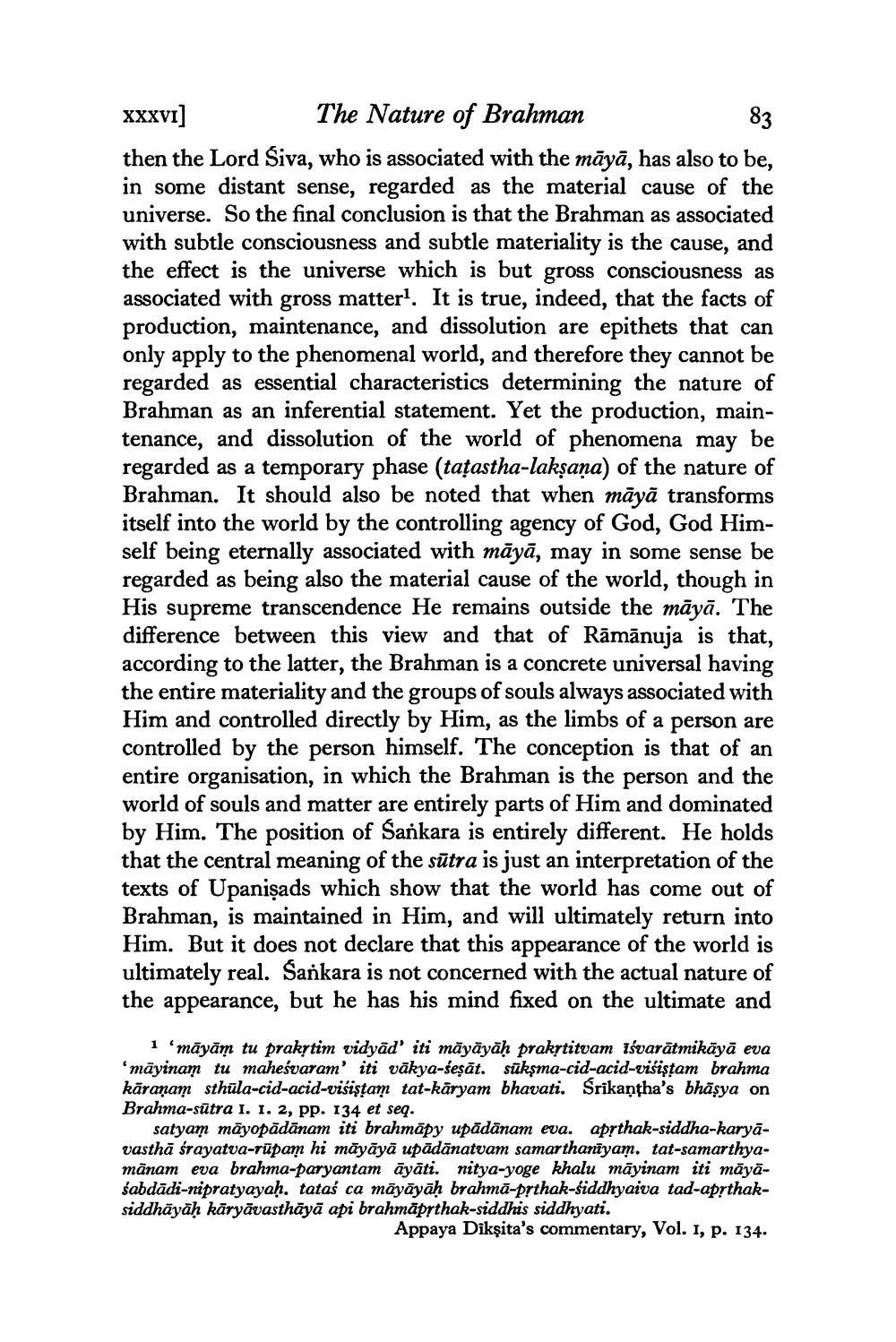________________
XXXVI]
The Nature of Brahman then the Lord Siva, who is associated with the māyā, has also to be, in some distant sense, regarded as the material cause of the universe. So the final conclusion is that the Brahman as associated with subtle consciousness and subtle materiality is the cause, and the effect is the universe which is but gross consciousness as associated with gross matter. It is true, indeed, that the facts of production, maintenance, and dissolution are epithets that can only apply to the phenomenal world, and therefore they cannot be regarded as essential characteristics determining the nature of Brahman as an inferential statement. Yet the production, maintenance, and dissolution of the world of phenomena may be regarded as a temporary phase (tațastha-laksana) of the nature of Brahman. It should also be noted that when māyā transforms itself into the world by the controlling agency of God, God Himself being eternally associated with māyā, may in some sense be regarded as being also the material cause of the world, though in His supreme transcendence He remains outside the māyā. The difference between this view and that of Rāmānuja is that, according to the latter, the Brahman is a concrete universal having the entire materiality and the groups of souls always associated with Him and controlled directly by Him, as the limbs of a person are controlled by the person himself. The conception is that of an entire organisation, in which the Brahman is the person and the world of souls and matter are entirely parts of Him and dominated by Him. The position of Sankara is entirely different. He holds that the central meaning of the sūtra is just an interpretation of the texts of Upanişads which show that the world has come out of Brahman, is maintained in Him, and will ultimately return into Him. But it does not declare that this appearance of the world is ultimately real. Sankara is not concerned with the actual nature of the appearance, but he has his mind fixed on the ultimate and
1 'māyām tu prakytim vidyād' iti māyāyāḥ prakytitvam iśvarātmikāyā eva māyinam tu maheśvaram' iti vākya-seşāt. sükşma-cid-acid-visistam brahma kāranam sthūla-cid-acid-višiştam tat-kāryam bhavati. Srikantha's bhāsya on Brahma-sūtra 1. 1. 2, pp. 134 et seq.
satyam māyopādānam iti brahmāpy upādānam eva. aprthak-siddha-karyavasthā śrayatva-rūpam hi māyāyā upādānatvam samarthanīyam. tat-samarthyamānam eva brahma-paryantam āyāti. nitya-yoge khalu māyinam iti māyāśabdādi-nipratyayaḥ, tataś ca māyāyāḥ brahma-prthak-siddhyaiva tad-aprthaksiddhāyāḥ kāryāvasthāyā api brahmāprthak-siddhis siddhyati.
Appaya Dikşita's commentary, Vol. 1, p. 134.




